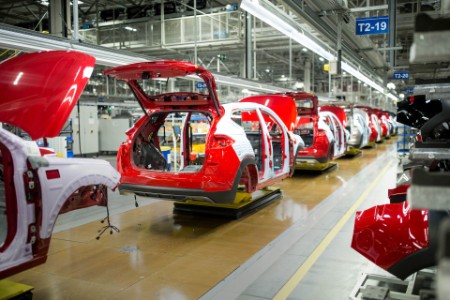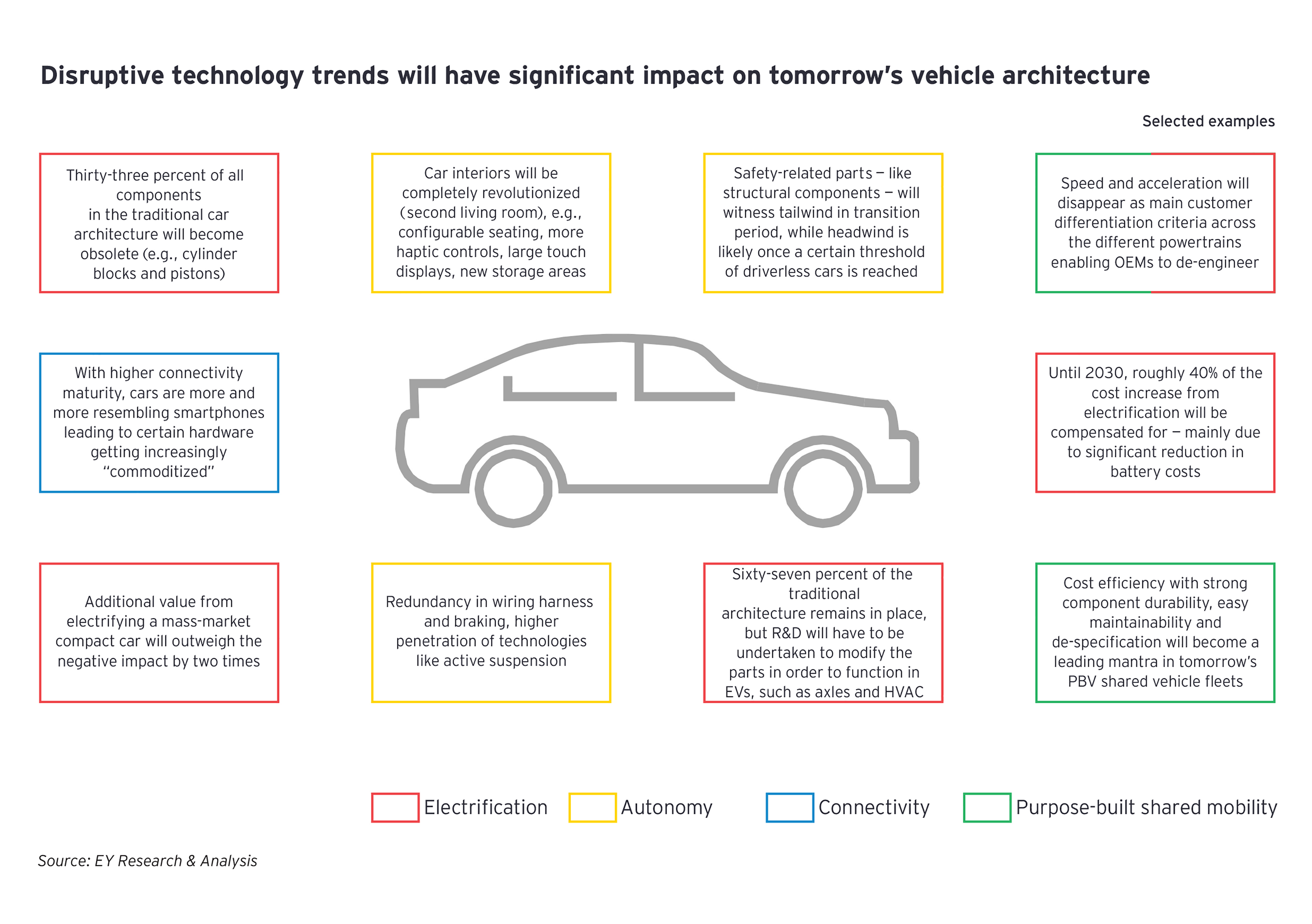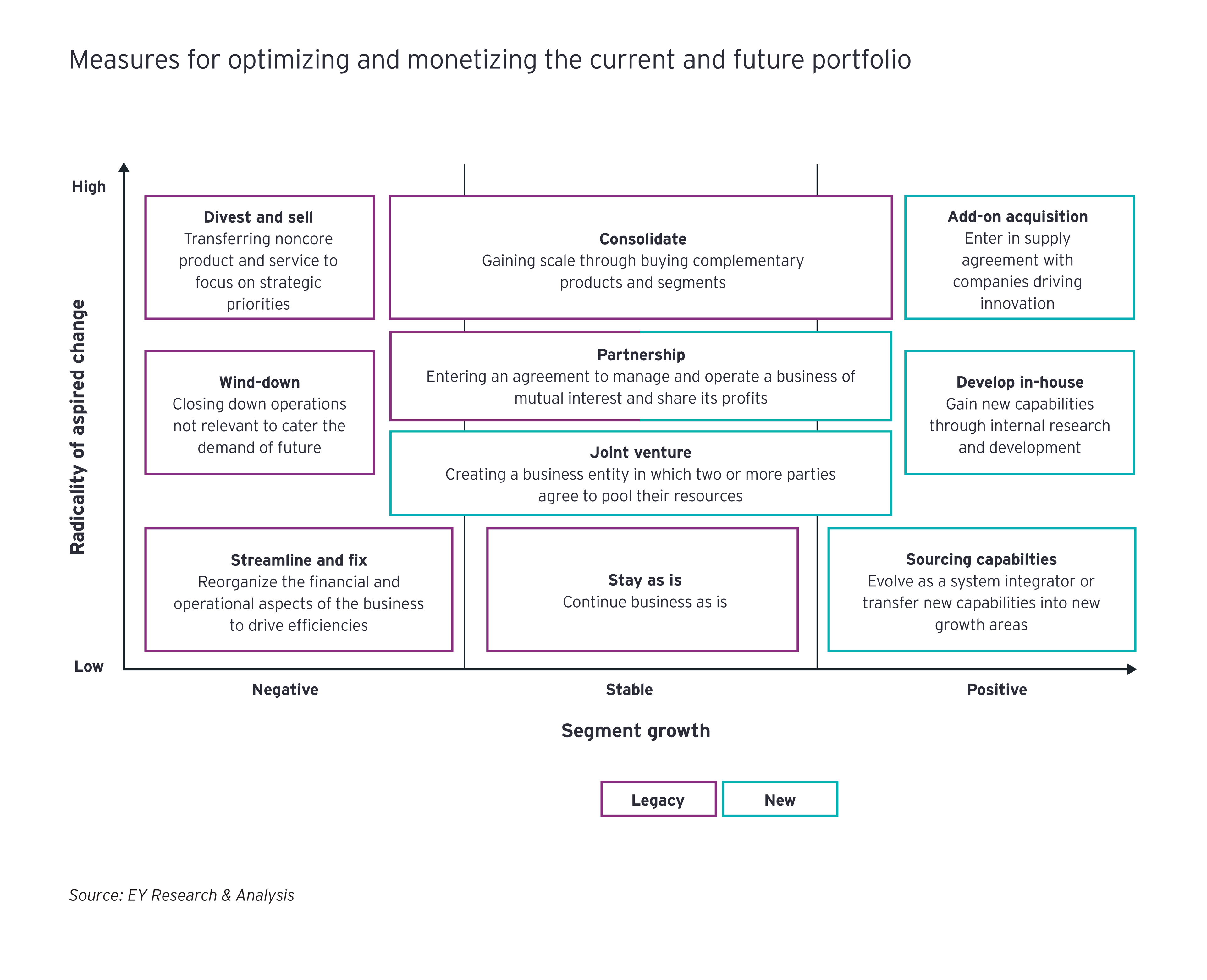6. Partnership and joint ventures
Companies that prefer to maintain autonomy often choose partnerships or joint ventures. Forming a JV for a selection of products, whether legacy or new, provides an opportunity to combine forces and complement each other — from both a capital and a resources standpoint. However, these must be developed carefully. The creation of a joint target picture, systems and processes harmonization, implementation of common success factors and key performance indicator tracking systems, as well as fostering strong communication channels between equals, are important to creating mutual long-term value.
7. Stay as is
Undoubtedly, the riskiest option in this rapidly changing environment is staying as is. It is applicable to a small fraction of companies whose current business may perhaps not be disrupted by the ongoing industry evolution. Yet, those companies may also miss out on the opportunity to grow into new business areas. Latecomers often need better arguments and higher capital to persist in an already relatively matured market.
8. Developing in-house
In-house development is an option when the technology is nascent, capital is adequate and resources with required capabilities are available. However, the company should carefully evaluate its internal capabilities, such as talent and technology, and likely future market scenarios before investing capital in new technologies, while also balancing this with the legacy portfolio. A long-term view is essential to assess if there is true value, even beyond the low-hanging fruit.
9. Sourcing capabilities and vertical integration
Companies can expand their value proposition via smart procurement of complementary technology and vertically integrate (e.g., becoming a system integrator) or enable the transfer of new capabilities into new growth areas. Additionally, purchasing adjacent products or components can help companies implement robust aftermarket strategies, such as becoming a one-stop platform for ICE technology.
10. Add-on acquisition
Add-on acquisitions are performed mainly when the capabilities required for the future state cannot be developed in-house in a timely manner due to required capital or a lack of resources. Finding the right target, structuring the deal for success and paying the right price are important aspects to achieve the desired future state. Evaluating all aspects of people, processes, systems and assets prior to acquisition will be important for the smooth integration of the companies. When done correctly, the combined companies can realize synergies, go to market at the desired speed and offer differentiated products.
The strategic options outlined above may be acted upon either as a stand-alone option or in combination with parallel TOMs to transform the organization. For example, a cash-strapped company can divest in a business unit with down trending market demand to raise capital and acquire a new company with innovative capabilities that fit the parent company’s future state.
Key considerations
As supplier executives begin to think about their company’s journey, it is important that they critically ask the following questions:
- What are the capital and resource allocation choices facing the key executives and are they aligned?
- How do we balance investments between legacy assets vs. growth bets?
- Does the current operating model support our growth ambitions?
- How do we leverage the strength of our OEM customers and our own suppliers to influence the regulatory environment and the consumer shift (e.g., incentives)?
- Which partnerships could set the stage for a significant competitive advantage? Should we be doubling down on software capabilities?
- What will my company’s role and value-add be in the overall automotive ecosystem and value chain?
- Is there an asset-light model that will allow us to keep the revenue stream, but lighten up the asset and property, plant and equipment load?
Finally, it is unknown how much support will be extended by local regulatory authorities, governments and OEMs to help suppliers and associated talent pools transition successfully. Investments in retooling assets and talent will also require a thoughtful investment that accounts for the environmental, social and governance impact of any strategy.
In conclusion
EY is well positioned to help companies adapt to the electrification trend, mitigate the impact on product portfolios, define lean winddown businesses, and increase total shareholder return by:
- Helping executives identify and understand the available options in broader ecosystem
- Scenario modeling and assessment of TOMs and business groups
- Isolating which legacy assets and capabilities should be in the perimeter
- Understanding how to drive change using in-house SBGs and anticipate risks
- Supporting partner and target search to facilitate your M&A or collaboration agenda
- Leveraging our cross sectoral footprint by connecting key stakeholders of new emerging ecosystems such as governments, utility and mobility players
In an era of constant change and disruption, it is important to remember that strategy never stops, and operating models are constantly transforming. It is a continuous process of monitoring and refinement, especially during times of fundamental industry disruption. With a strong focus on end-to-end strategy realization, EY professionals are actively supporting suppliers as they navigate the whole cycle of strategic change.
Constantin Wirschke, Venkat Maddila, Susan Walker, Oya Zamora, Matt Joergensen, Violetka Dirlea and Giri Varadarajan, of Ernst & Young, LLP, contributed to this article.
Summary
The transition to EVs is expected to be rapid and will likely have a significant impact on capital allocation decisions of nearly all automotive suppliers. During this transition, companies must balance the need to maintain existing ICE-related vehicle components with innovative offerings and growth bets. To successfully transition, it is essential that companies act now to prepare for the upcoming change. Suppliers can proactively leverage this pivotal moment to optimize their capital allocation decisions related to current operations, avoiding stranded assets, propelling profitable growth and subsequently remaining the supplier of choice, whether the future is electric, connected, autonomous or a combination.




